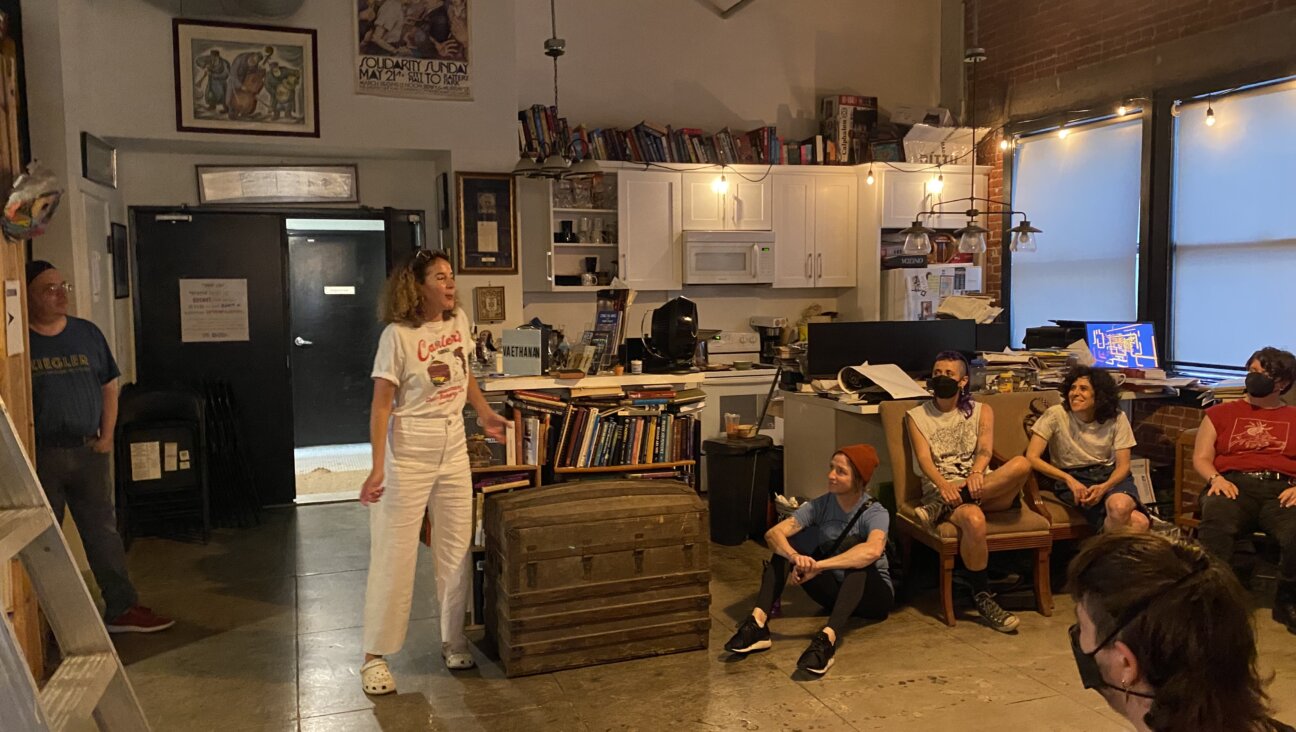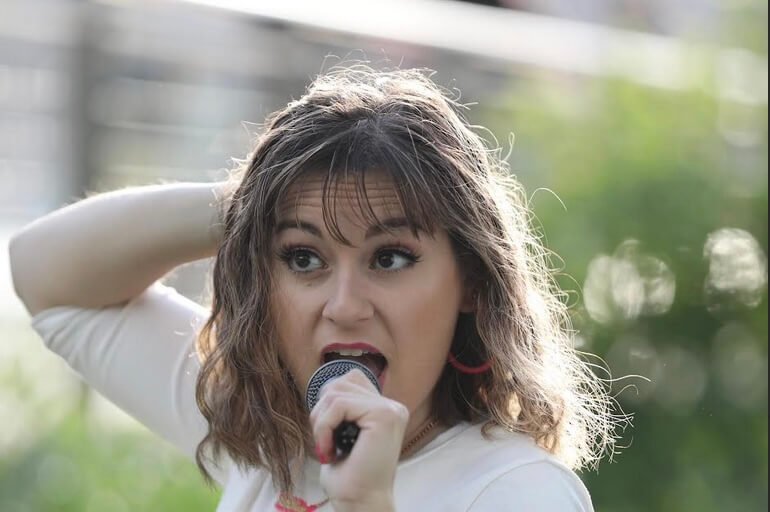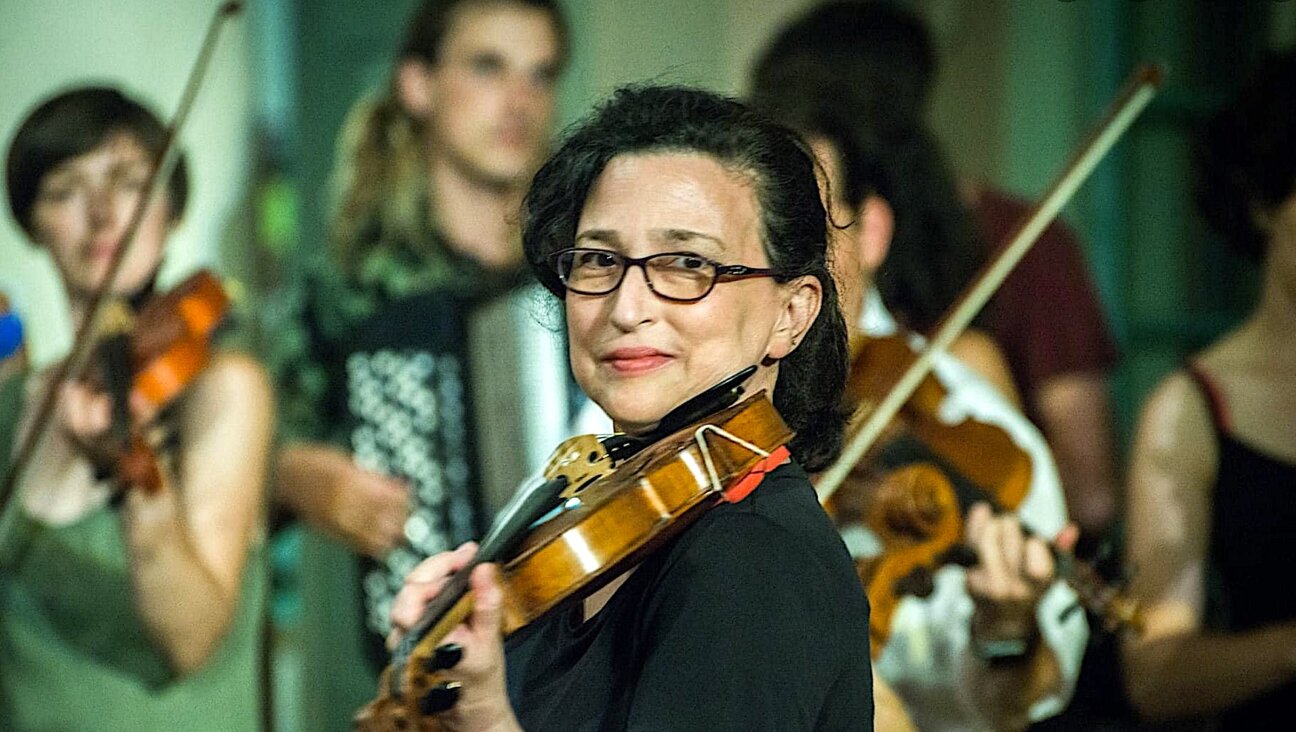Want To Know Where Yiddish Is Going? Ask Directions In Israel

Image by WikiCommons
This article originally appeared in the Yiddish Forverts.
During a recent trip to Israel, my 31-year old son, Naftali, spent an afternoon taking in the sights of Tel Aviv. Although he’s a fluent Hebrew speaker, he was curious whether any of the merchants or passers-by knew Yiddish, too, and decided to check it out.
Entering a shop that sold antique European teapots and china, Naftali noticed that the storekeeper appeared to be in his sixties, so he gave it a shot. “Excuse me, do you speak Yiddish?” he asked. The storekeeper grinned and said he did, adding that he was born in Poland and came to Israel as a young child. “It’s been 30 years since someone has spoken to me in Yiddish,” he said wistfully.
Ten minutes later, Naftali dropped into a bookstore. Not only did the salesperson reply in Yiddish but even showed him several Yiddish books for sale. Back on the street, Naftali stopped another middle-aged man and asked him, in Yiddish, how to get to Tchernichovsky Street. The man walked him to the corner and gave him directions in grammatically perfect sentences, a rarity these days.
Later, when my son got into a taxi, it happened again. This time, the reaction was different, though. The driver didn’t smile enthusiastically, but simply replied in Yiddish with no emotion, as if hearing a 31-year old guy speaking Yiddish occurred on a daily basis.
So why is this a big deal? For years, Israelis have been stereotyped as embarrassed by, or even hostile to the language of the so-called “timid” diaspora Jews, an image buttressed by the late Prime Minister David Ben-Gurion’s well-known remark at a 1945 Knesset session, that the language “grated” in his ears.
Naftali’s informal experiment suggests that the image of Yiddish in Israel has changed considerably. This isn’t about the Hasidim in insulated enclaves like Mea Shearim where Yiddish is an everyday tongue, but rather of secular and “mesorati” (traditional) Hebrew-speaking middle-aged Jews of Tel Aviv. My guess is that many of them are children of Holocaust survivors or were themselves born in a displaced persons camp after the war. Others may have made aliyah from Buenos Aires, Montreal or other cities that once had a large Yiddish-speaking population. Like the porcelain salesman who hadn’t spoken Yiddish in 30 years, many of them probably haven’t had an opportunity to use the language, particularly if their grandparents and other elderly relatives have passed on.
In Jerusalem, Naftali discovered another unexpected group of Yiddish speakers, but of a very different kind. A friend had invited him to a shabbos dinner organized for formerly Hasidic families. During the meal, the parents chatted, joked and smoked cigarettes while their children, minus the payos, played ball and cavorted in Yiddish. One young couple told Naftali that although they were no longer religious, they continued to speak Yiddish to each other and to the kids because it felt more natural for them than speaking Hebrew.
Considering that Naftali had, without much effort, discovered ten Yiddish speakers simply by addressing them in the language, there are likely quite a few other closet Yiddish speakers in the Jewish state. They may not know that there are Israeli organizations which conduct Yiddish classes and cultural events like Leyvik House,Yung Yidish and Beit Sholem Aleichem – all of which provide opportunities to hear or chat in mame-loshn.
Then again, maybe they do know, but cultural programs are simply not their cup of tea. Israeli Yiddish activists who want to engage this population might want to consider organizing a fun-filled Yiddish festival on a main street of Tel Aviv. Imagine a band playing Yiddish songs; food-tasting kiosks with Ashkenazi favorites like knishes and borscht; and young organizers greeting passers-by in Yiddish.
From my own experience speaking to Israelis, most still believe that the only Yiddish speakers today are the Hasidim and the elderly. But as Naftali discovered on a whim, there are apparently a number of Israelis of various ages eager to express themselves in the language of their childhood if given the chance. All they need is someone to walk over and ask them, in Yiddish, how to get to Tchernichovsky Street.
A message from our CEO & publisher Rachel Fishman Feddersen

I hope you appreciated this article. Before you go, I’d like to ask you to please support the Forward’s award-winning, nonprofit journalism during this critical time.
At a time when other newsrooms are closing or cutting back, the Forward has removed its paywall and invested additional resources to report on the ground from Israel and around the U.S. on the impact of the war, rising antisemitism and polarized discourse.
Readers like you make it all possible. Support our work by becoming a Forward Member and connect with our journalism and your community.
— Rachel Fishman Feddersen, Publisher and CEO
























